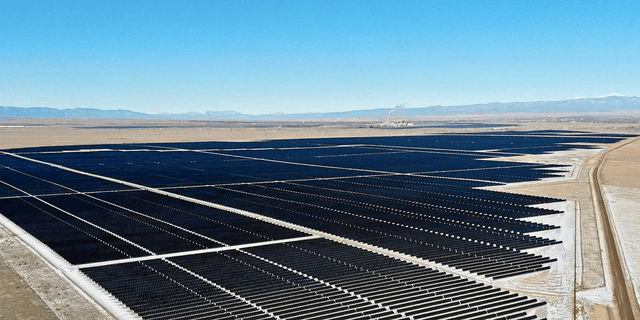In Short : The U.S. Energy Information Administration (EIA) forecasts that solar power will significantly dominate grid-power growth in the United States through 2025. This projection reflects the ongoing expansion and prominence of solar energy in the country’s energy landscape, contributing to a more sustainable and diverse power sector.
In Detail : Government incentives to help PV pile on 79GW over next two years, says Energy Information Administration
Solar will dominate US grid-scale growth in electricity generation over the next two years with 79GW of capacity additions, largely at the expense of coal, as the sector takes advantage of lucrative federal tax credits, according to a new analysis by the Energy Information Administration (EIA).
The agency forecasts solar power generation will grow 75% from 163 billion kWh in 2023 to 286 billion kWh in 2025 as developers add 36GW of grid-scale projects this year and 43GW in 2025. On 1 January, there was 95GW of US solar capacity.
“The new capacity will boost the solar share of total generation to 6% in 2024 and 7% in 2025, up from 4% in 2023,” EIA, the statistical arm of the US Department of Energy, said in its Short-Term Energy Outlook.
The landmark climate law signed by President Joe Biden in August 2022 benefits the sector with long-term tax credits that incentivise solar energy generation and consumption, and development of a domestic supply chain.
Moreover, grid-scale solar projects are now eligible for the production tax credit (PTC) worth $27.50/MWh for power sent to the electrical grid over the first decade of operation, and up to $33.50/MWh, if certain eligibility criteria are met. Previously, they could qualify only for a 30% tax credit on a project’s capital investment.
Access to the PTC has helped solar become more cost-competitive with onshore wind, the largest renewable energy generator followed by large hydro, whose growth has slowed in recent years as projects become harder to site and interconnect.
EIA forecasts wind power generation will grow 11% from 430 bn kWh in 2023 to 476 bn kWh in 2025, the great majority from onshore. While the nascent offshore wind sector will bring several initial grid-scale projects online through 2025, it will remain a minor player with the country’s overall power generation mix this decade.
Developers will add about 7GW of wind projects this year, most of it onshore, according to EIA, which sees wind’s share of electricity generation ticking up to 12% in 2025 from 11% now.
Driven mainly by solar, renewable sources will increase from 22% of electricity generation last year to 26% through 2025. Annual generation from renewables surpassed nuclear for the first time in 2021 and coal for the first time in 2022.
EIA projects that coal power generation will continue to decline 18% from 665 bn kWh last year to 548 bn kWh in 2025, while natural gas, the largest generation source, will remain flat at 1.7 trn kWh. If accurate, coal will have a 13% market share in 2025 versus 13% now, while natural gas will slip from 42% to 41%.
“Driven by our forecast of rising generation from solar and to a lesser extent wind, we expect that electricity generation from coal will decline by 9% in 2024 and by 10% in 2025, due to a combination of higher costs compared with renewables and another 12 GW of coal-fired capacity retiring over the next two years,” EIA said.

